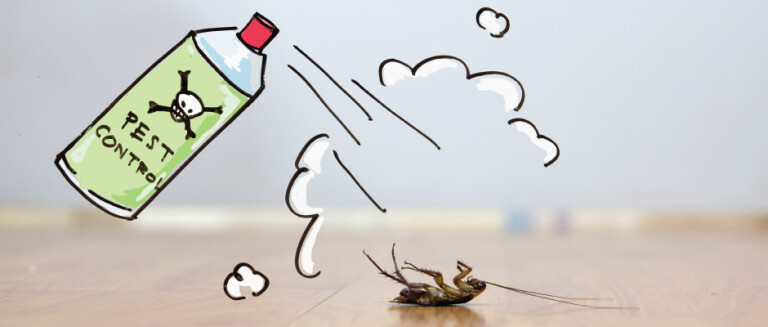
Owning or managing a rental property comes with its fair share of responsibilities, and one of the most important aspects is maintaining a clean and pest-free environment for your tenants. Pests can not only cause discomfort and inconvenience but also result in damage to your property and reputation. To ensure a pleasant living experience for your tenants and to protect your investment, it’s crucial to implement effective pest prevention measures. In this blog, we’ll explore the best ways to prevent pests in your rental property.
1. Regular Cleaning and Maintenance:
The foundation of effective pest prevention is maintaining a clean and well-kept environment. Regular cleaning reduces the availability of food sources and hiding spots that pests seek. Ensure that common areas, hallways, and individual units are cleaned thoroughly and consistently. Address any leaks, standing water, or damp areas promptly, as these can attract pests like roaches and rodents.

2. Proper Waste Management:
Improper disposal of trash can quickly attract pests. Provide tenants with clear instructions on how to dispose of their waste properly, including using sealed bins and regularly taking out the trash. Make sure outdoor garbage areas are well-maintained and regularly cleaned to prevent odors and infestations.
3. Seal Entry Points:
Pests often find their way into buildings through small cracks, gaps, and openings. Regularly inspect the property for any openings and seal them promptly. Pay close attention to areas around windows, doors, utility lines, and vents. Installing door sweeps, window screens, and weather stripping can help keep pests out.
4. Landscaping Maintenance:
Well-maintained landscaping can play a significant role in pest prevention. Trim shrubs and trees away from the building to eliminate potential bridges for pests to access the property. Keep grass and vegetation neatly trimmed, as tall grass can attract ticks, fleas, and rodents.
5. Educate Tenants:
Empower your tenants with knowledge on pest prevention practices. Provide them with a guide that outlines basic steps they can take, such as proper food storage, keeping their living spaces clean, and promptly reporting any signs of pests. A proactive tenant can be a valuable ally in your efforts to prevent infestations.
6. Regular Pest Inspections:
Schedule regular pest inspections by professional exterminators. They can identify potential vulnerabilities and address pest issues before they become major problems. Regular inspections also demonstrate your commitment to maintaining a pest-free environment for your tenants.
7. Address Plumbing and Drainage Issues:
Moisture is a magnet for pests, so addressing plumbing leaks and drainage problems is essential. Fix any leaks promptly and ensure that drains are functioning properly. Moisture control can go a long way in deterring pests like silverfish and cockroaches.
8. Store Firewood Properly:
If your rental property has firewood storage, ensure that it is located at a safe distance from the building. Pests such as termites and ants can easily nest in firewood and make their way into the property.
9. Pest-Resistant Materials:
Consider using pest-resistant building materials during construction or renovations. These materials can act as a barrier against pests, reducing the likelihood of infestations.
10. Respond Swiftly:
If a pest issue arises, address it promptly. Ignoring pest problems can lead to rapid infestations that are much more difficult and expensive to control. Consult with a professional exterminator to develop an effective treatment plan.
Conclusion: Preventing pests in your rental property requires a proactive approach, consistent efforts, and collaboration between property owners, property managers, and tenants. By maintaining cleanliness, conducting regular inspections, sealing entry points, and educating tenants, you can create a pest-free environment that promotes tenant satisfaction, preserves the value of your property, and upholds your reputation as a responsible landlord. Remember, the best way to deal with pests is to prevent them in the first place.
